Starting with just 15 students: The 110-year history of Sophia University is traced back to its origins.
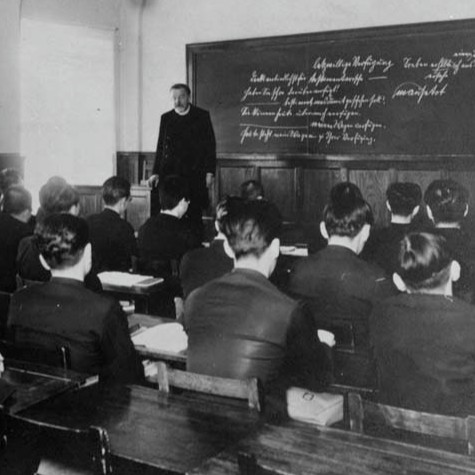
On November 1st, we commemorate the establishment of Sophia University. Founded in 1913 by three Jesuit priests commissioned by the pope at the time, the university celebrated its 112th anniversary in 2025. Today, it has grown into a multidisciplinary university with nine faculties, 29 departments, and 12,419 enrolled undergraduates as of May 1, 2025. Yet, in its founding year, only 15 students were in attendance in its first class. Now, let us look back on the path leading up to the university’s opening.
1.The Path to the Founding of Sophia University
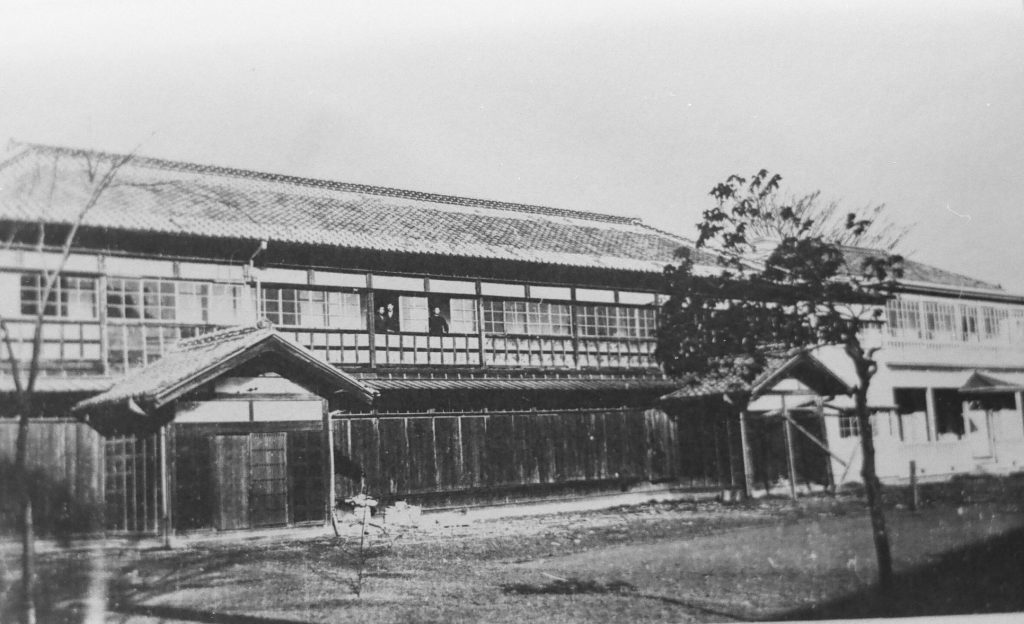
The three priests dispatched to establish the university were Joseph Dahlmann, Henri Boucher and James Rockliff. They first placed themselves at temporary lodgings in Myogadani, Koishikawa, Tokyo, and began preparations for the university’s establishment. In February 1910, Father Hermann Hoffmann arrived in Japan. He would later become the university’s first president, enhancing its faculty resources.
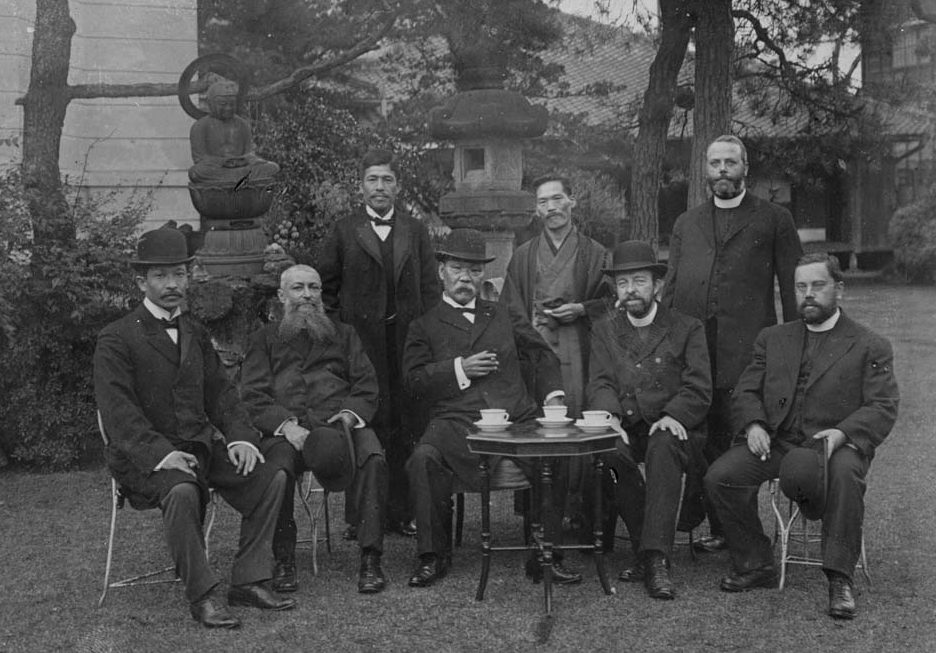
The founding committee appealed for highly capable personnel and substantial funds to establish the university. In April 1911, the Sophia Gakuin Foundation was established using funds sent by the Society of Jesus. The challenge then became securing land for the school building. Based on advice from various sources, the current location in Kioicho was chosen. This centered around the former private residence of Tomonosuke Takashima, the former Minister of Military Affairs, and included the estates of three other generals: Hisanao Oshima, Tetsuma Akaboshi and Buhei Tanaka. Although negotiating the land purchases proved difficult, ultimately 4,300 tsubo (14,000 square meters) of land was acquired for ¥430,000. In addition to Jesuit priests, the faculty included the leading German authority, Shigetaro Mizuno, and the eminent Japanese language and Chinese literature scholar, Takeo Eida.

The application to establish the university was submitted on 14 March 1913 and approved by the Minister of Education on the 28th, marking its establishment as Sophia University under the Vocational School Ordinance. The university offered a two-year preparatory course and a three-year undergraduate programme with departments in philosophy, German literature, and commerce. The preparatory course corresponded to today’s university liberal arts programme, and admission was open to those who had completed five years of formal secondary education. On 31 March, advertisements calling for applicants were placed in various newspapers.
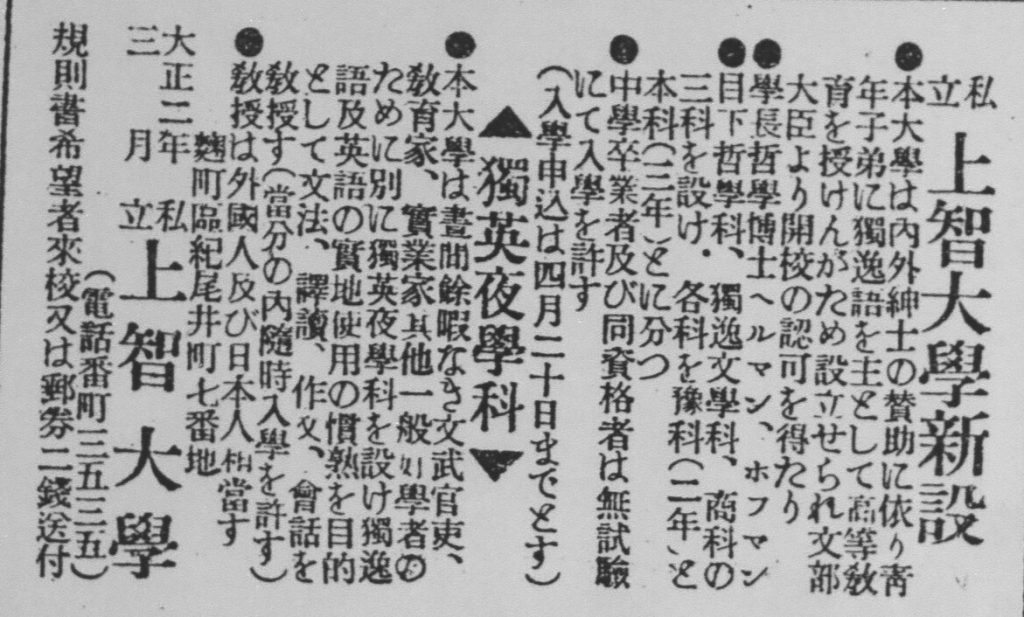
2.“Classes shall start with as few as four students!”
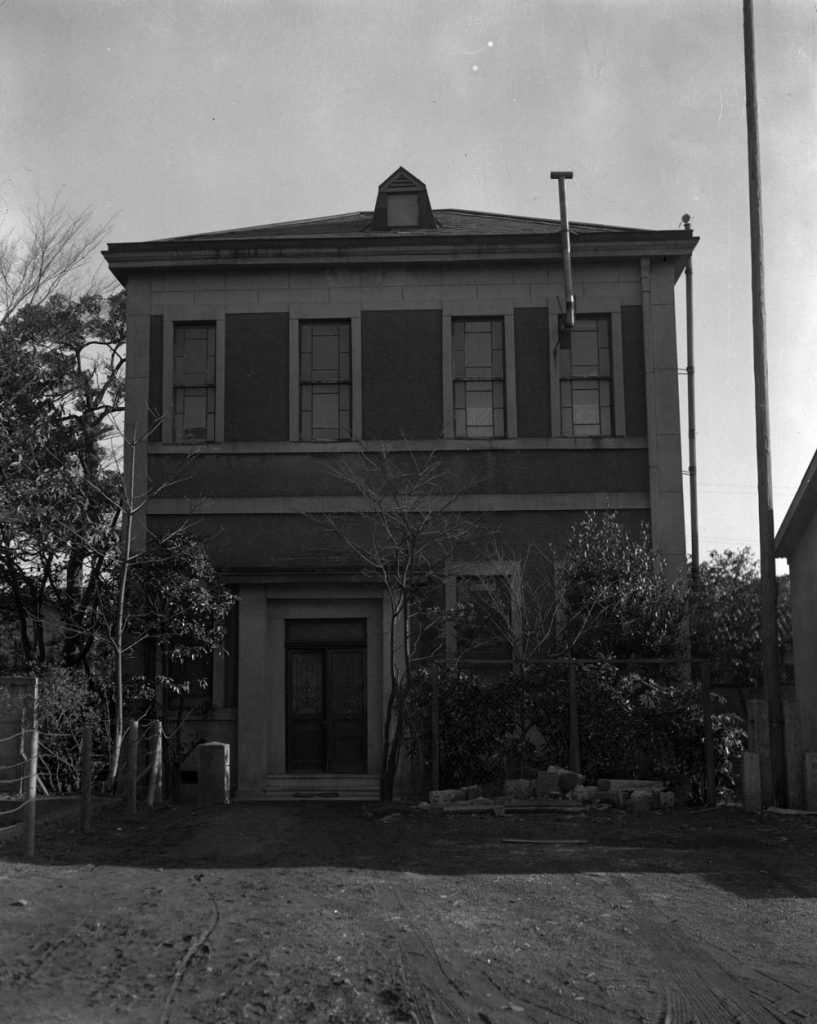
Although President Hoffman’s policy was to open the school with a minimum of four students, the preparatory course received 20 applicants. When classes began on 21 April, 15 students attended.
At the same time, evening language courses for working adults were established. In March 1913, the school received official approval from the Governor of Tokyo and was named the ‘Private German-English Evening School’. The programme lasted two years, with Saturday lectures on literature and academia conducted in English and German. Language courses began in April, with 36 students enrolling in German and 11 in English. Ultimately, the foreign language school started with around 70 students.
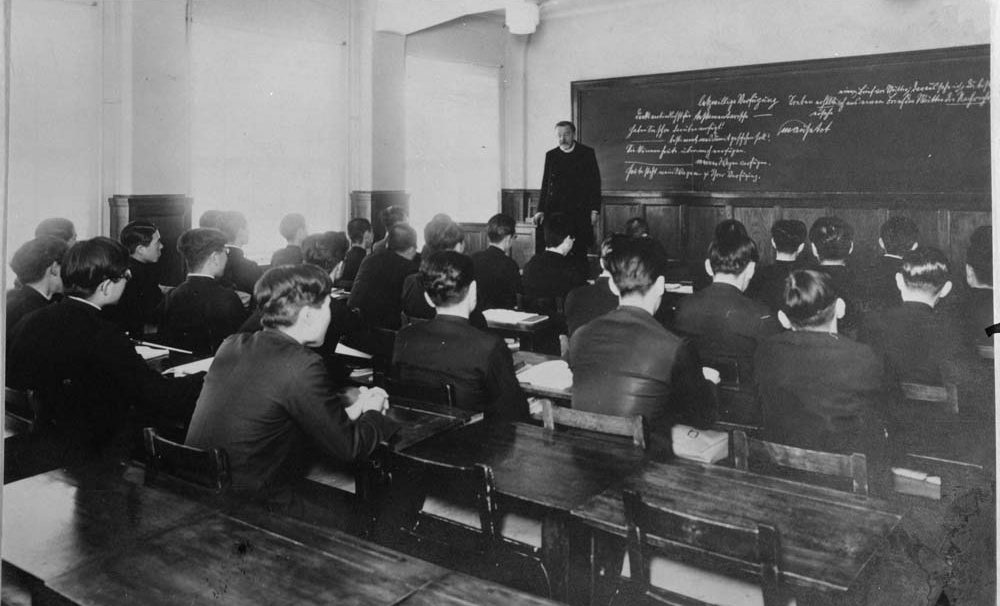
Students who completed the two-year preparatory course advanced to the three-year undergraduate programme. Students from the three departments took classes together in the preparatory course, with German as the first foreign language and English as the second. As many undergraduate courses were conducted in German, it was essential to master German during the preparatory period. President Hoffmann himself delivered enthusiastic and passionate lectures in these German classes. This marked the beginning of the university’s later reputation as the ‘Sophia University of German’.
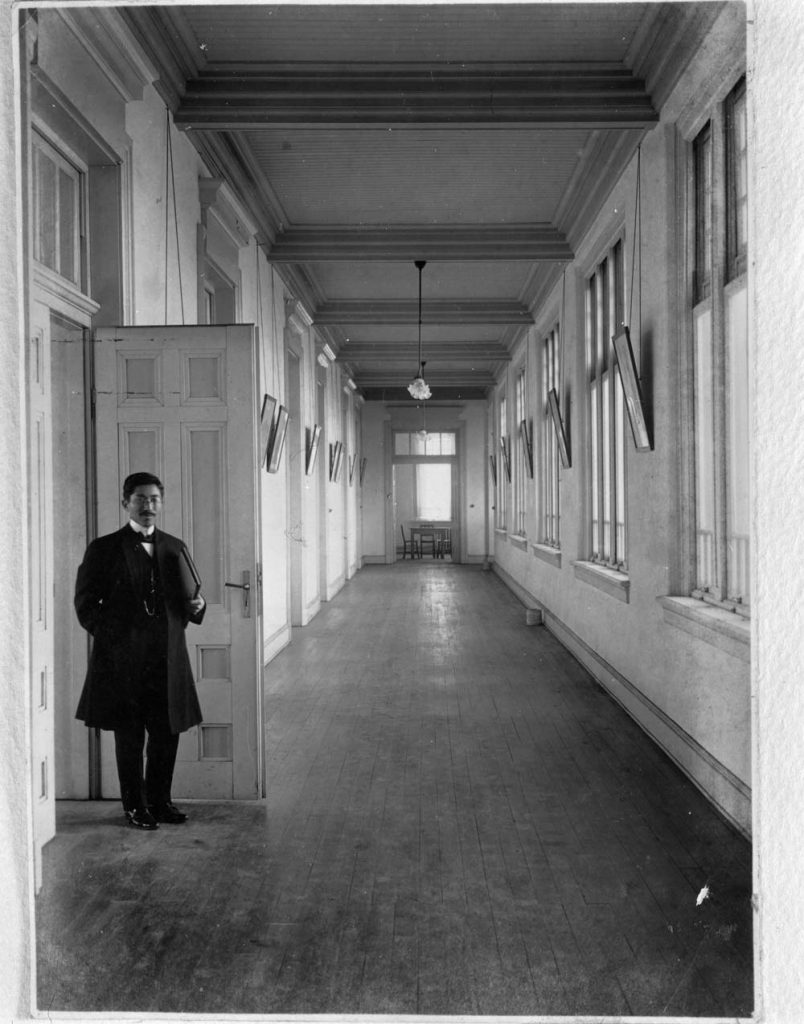

At this point, the university still did not have its own campus. The Ōshima Residence served as the temporary school building and the Akaboshi Residence served as the dormitory. However, the long-awaited three-story brick school building was completed in September 1914. This magnificent structure had a floor area of 767 square meters (232 tsubo) and a total floor space of 2,475 square meters (750 tsubo) and featured a rooftop garden. The architect was Jan Letzel, a Czech architect who also created the Hiroshima Prefectural Products Exhibition Hall (now known as the Atomic Bomb Dome). The new Gothic-style building, with its red brick color, harmonized with the old pine trees lining the outer moat of Edo Castle (now the university grounds), evoking the image of a medieval castle. The ‘Fifty Years of Sophia University’ chronicle records: ‘The entrance hall featured busts of Goethe and Schiller on both sides, and the ceilings in the corridors and classrooms were very high.’
However, the building partially collapsed in the Great Kanto earthquake ten years later. The launch of Sophia University, carrying the dreams of Xavier and the expectations of the Pope, seemed daunting and filled with challenges.
The current campus features new buildings, including the iconic Yotsuya landmark, Sophia Tower (Building 6), and Building 15, which was completed in 2022 to serve as a hub for Lifelong Learning and Community Engagement. These new buildings help to create a learning environment that keeps pace with the times. Looking to the future, the university will continue to embody the spirit of the priests who founded it, welcoming many aspiring students and providing an environment in which they can flourish.